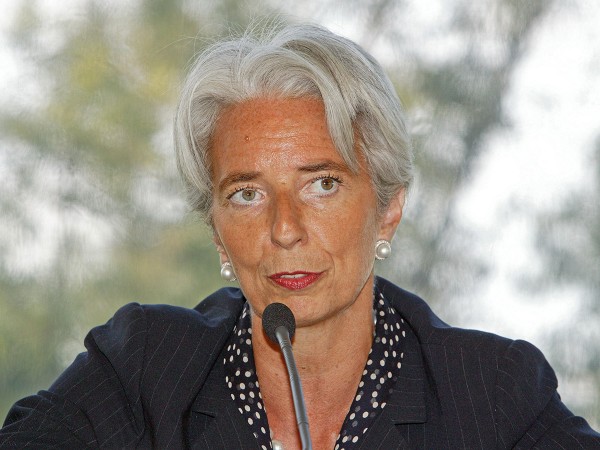 There is increasing recognition that the world is facing a climate emergency. Concerns are growing about the damaging effects of global warming on weather patterns, with increasing droughts, forest fires, floods and hurricanes. Ice sheets are melting and glaciers retreating, with consequent rising sea levels. Habitats and livelihoods are being destroyed. And many of the effects seem to be occurring more rapidly than had previously been expected.
There is increasing recognition that the world is facing a climate emergency. Concerns are growing about the damaging effects of global warming on weather patterns, with increasing droughts, forest fires, floods and hurricanes. Ice sheets are melting and glaciers retreating, with consequent rising sea levels. Habitats and livelihoods are being destroyed. And many of the effects seem to be occurring more rapidly than had previously been expected.
Extinction Rebellion has staged protests in many countries; the period from 20 to 27 September saw a worldwide climate strike (see also), with millions of people marching and children leaving school to protest; a Climate Action Summit took place at the United Nations, with a rousing speech by Greta Thunberg, the 16 year-old Swedish activist; the UN’s Intergovernmental Panel on Climate Change (IPCC) has just released a report with evidence showing that the melting of ice sheets and rising sea levels is more rapid than previously thought; at its annual party conference in Brighton, the Labour Party pledged that, in government, it would bring forward the UK’s target for zero net carbon emissions from 2050 to 2030.
Increasingly attention is focusing on what can be done. At first sight, it might seem as if the answer lies solely with climate scientists, environmentalists, technologists, politicians and industry. When the matter is discussed in the media, it is often the environment correspondent, the science correspondent, the political correspondent or the business correspondent who reports on developments in policy. But economics has an absolutely central role to play in both the analysis of the problem and in examining the effectiveness of alternative solutions.
One of the key things that economists do is to examine incentives and how they impact on human behaviour. Indeed, understanding the design and effectiveness of incentives is one of the 15 Threshold Concepts we identify in the Sloman books.
One of the most influential studies of the impact of climate change and means of addressing it was the study back in 2006, The Economics of Climate Change: The Stern Review, led by the economist Sir Nicholas Stern. The Review reflected economists’ arguments that climate change represents a massive failure of markets and of governments too. Firms and individuals can emit greenhouse gases into the atmosphere at no charge to themselves, even though it imposes costs on others. These external costs are possible because the atmosphere is a public good, which is free to exploit.
 Part of the solution is to ‘internalise’ these externalities by imposing charges on people and firms for their emissions, such as imposing higher taxes on cars with high exhaust emissions or on coal-fired power stations. This can be done through the tax system, with ‘green’ taxes and charges. Economists study the effectiveness of these and how much they are likely to change people’s behaviour.
Part of the solution is to ‘internalise’ these externalities by imposing charges on people and firms for their emissions, such as imposing higher taxes on cars with high exhaust emissions or on coal-fired power stations. This can be done through the tax system, with ‘green’ taxes and charges. Economists study the effectiveness of these and how much they are likely to change people’s behaviour.
Another part of the solution is to subsidise green alternatives, such as solar and wind power, that provide positive environmental externalities. But again, just how responsive will demand be? This again is something that economists study.
Of course, changing human behaviour is not just about raising the prices of activities that create negative environmental externalities and lowering the prices of those that create positive ones. Part of the solution lies in education to make people aware of the environmental impacts of their activities and what can be done about it. The problem here is that there is a lack of information – a classic market failure. Making people aware of the consequences of their actions can play a key part in the economic decisions they make. Economists study the extent that imperfect information distorts decision making and how informed decision making can improve outcomes.
Another part of the solution may be direct government investment in green technologies or the use of legislation to prevent or restrict activities that contribute to global warming. But in each case, economists are well placed to examine the efficacy and the costs and benefits of alternative policies. Economists have the tools to make cost–benefit appraisals.
Economists also study the motivations of people and how they affect their decisions, including decisions about whether or not to take part in activities with high emissions, such air travel, and decisions on ‘green’ activities, such as eating less meat and more vegetables.
If you are starting out on an economics degree, you will soon see that economists are at the centre of the analysis of some of the biggest issues of the day, such as climate change and the environment generally, inequality and poverty, working conditions, the work–life balance, the price of accommodation, the effects of populism and the retreat from global responsibility and, in the UK especially, the effects of Brexit, of whatever form.
Articles
Report
Questions
- Explain what is meant by environmental externalities.
- Compare the relative merits of carbon taxes and legislation as means of reducing carbon emissions.
- If there is a climate emergency, why are most governments unwilling to take the necessary measures to make their countries net carbon neutral within the next few years?
- In what ways would you suggest incentivising (a) individuals and (b) firms to reduce carbon emissions? Explain your reasoning.
- For what reasons are the burdens of climate changed shared unequally between people across the globe?
 Where you live in Great Britain can have a profound effect on your earning potential. According to a report published by the Social Mobility Commission, there is a growing geographical divide, with more affluent areas getting relatively richer, while ‘many other parts of the country are being left behind economically and hollowed out socially’.
Where you live in Great Britain can have a profound effect on your earning potential. According to a report published by the Social Mobility Commission, there is a growing geographical divide, with more affluent areas getting relatively richer, while ‘many other parts of the country are being left behind economically and hollowed out socially’.
The Commission uses a Social Mobility Index to rank the 324 local authorities in England. The index is a measure of the social mobility prospects for people from disadvantaged backgrounds. It is ‘made up of 16 key performance indicators spanning each major life stage’.
The index shows that children from disadvantaged backgrounds have lower educational attainment, poorer initial jobs and poorer prospects for advancement in the labour market. Often they are stuck in low paid jobs with little chance of getting on the housing ladder and fewer chances of moving away from the area.
The problem is not simply one of a North-South divide or one of inner cities versus the suburbs. Many inner-city areas have been regenerated, with high incomes and high social and geographical mobility. Other inner-city areas remain deprived.
The worst performing areas are remote rural or coastal areas and former industrial areas, where industries have closed. As the author of the report states in the Guardian article linked below:
These areas have fewer specialist teachers, fewer good schools, fewer good jobs and worse transport links. … Many of these areas have suffered from a lack of regeneration: few high-paying industries are located there, and they often exhibit relatively limited job opportunities and clusters of low pay.
The problem often exists within areas, with some streets exhibiting growing affluence, where the residents have high levels of social mobility, while other streets have poor  housing and considerable levels of poverty and deprivation. Average incomes for such areas thus mask this type of growing divide within areas. Indeed, some of the richest areas have worse outcomes for disadvantaged children than generally poorer areas.
housing and considerable levels of poverty and deprivation. Average incomes for such areas thus mask this type of growing divide within areas. Indeed, some of the richest areas have worse outcomes for disadvantaged children than generally poorer areas.
There are various regional and local multiplier effects that worsen the situation. Where people from disadvantaged backgrounds are successful, they tend to move away from the deprived areas to more affluent ones, thereby boosting the local economy in such areas and providing no stimulus to the deprived areas. And so the divide grows.
Policies, according to the report, need to focus public investment, and incentives for private investment, in deprived areas. They should not focus simply on whole regions. You can read the specific policy recommendations in the articles below.
Articles
Social mobility is a stark postcode lottery. Too many in Britain are being left behind The Guardian, Alan Milburn (28/11/17)
State of the Nation – Sector Response FE News (28/11/17)
Social mobility: the worst places to grow up poor BBC News, Judith Burns and Adina Campbell (28/11/17)
How Britain’s richest regions offer worst prospects for poor young people Independent, May Bulman (28/11/17)
Small Towns Worst Places In Britain For Social Mobility, New ‘State Of The Nation’ Report Reveals Huffington Post, Paul Waugh (28/11/17)
Report
Social mobility in Great Britain: fifth state of the nation report Social Mobility Commission, News (28/11/17)
Fifth State of the Nation Report Social Mobility Commission, News (28/11/17)
Questions
- Explain how local multipliers operate.
- What is the relationship between social immobility as identified in the report and the elasticity of supply of labour in specific jobs?
- What is the link between geographical, occupational and social mobility?
- Explain why, apart from London, English cities are ‘punching below their weight on social mobility outcomes’.
- Go through each of the key policy recommendations of the report and consider the feasibility of introducing them.
- What policies could be adopted to retain good teachers in schools in deprived areas?
- To what extent might an increased provision of training ease the problem of social mobility?
- Investigate policies adopted in other European countries to tackle local deprivation. Are there lessons that can be learned by the UK government, devolved governments, local authorities or other agencies?
 According to Christine Lagarde, Managing Director of the IMF, the slow growth in global productivity is acting as a brake on the growth in potential income and is thus holding back the growth in living standards. In a recent speech in Washington she said that:
According to Christine Lagarde, Managing Director of the IMF, the slow growth in global productivity is acting as a brake on the growth in potential income and is thus holding back the growth in living standards. In a recent speech in Washington she said that:
Over the past decade, there have been sharp slowdowns in measured output per worker and total factor productivity – which can be seen as a measure of innovation. In advanced economies, for example, productivity growth has dropped to 0.3 per cent, down from a pre-crisis average of about 1 per cent. This trend has also affected many emerging and developing countries, including China.
We estimate that, if total factor productivity growth had followed its pre-crisis trend, overall GDP in advanced economies would be about 5 percent higher today. That would be the equivalent of adding another Japan – and more – to the global economy.
So why has productivity growth slowed to well below pre-crisis rates? One reason is an ageing working population, with older workers acquiring new skills less quickly. A second is the slowdown in world trade and, with it, the competitive pressure for firms to invest in the latest technologies.
 A third is the continuing effect of the financial crisis, with many highly indebted firms forced to make deep cuts in investment and many others being cautious about innovating. The crisis has dampened risk taking – a key component of innovation.
A third is the continuing effect of the financial crisis, with many highly indebted firms forced to make deep cuts in investment and many others being cautious about innovating. The crisis has dampened risk taking – a key component of innovation.
What is clear, said Lagarde, is that more innovation is needed to restore productivity growth. But markets alone cannot achieve this, as the benefits of invention and innovation are, to some extent, public goods. They have considerable positive externalities.
She thus called on governments to give high priority to stimulating productivity growth and unleashing entrepreneurial energy. There are several things governments can do. These include market-orientated supply-side policies, such as removing unnecessary barriers to competition, driving forward international free trade and cutting red tape. They also include direct intervention through greater investment in  education and training, infrastructure and public-sector R&D. They also include giving subsidies and/or tax relief for private-sector R&D.
education and training, infrastructure and public-sector R&D. They also include giving subsidies and/or tax relief for private-sector R&D.
Banks too have a role in chanelling finance away from low-productivity firms and towards ‘young and vibrant companies’.
It is important to recognise, she concluded, that innovation and structural change can lead to some people losing out, with job losses, low wages and social deprivation. Support should be given to such people through better education, retraining and employment incentives.
Articles
IMF chief warns slowing productivity risks living standards drop Reuters, David Lawder (3/4/17)
Global productivity slowdown risks social turmoil, IMF warns Financial Times, Shawn Donnan (3/4/17)
Global productivity slowdown risks creating instability, warns IMF The Guardian, Katie Allen (3/4/17)
The Guardian view on productivity: Britain must solve the puzzle The Guardian (9/4/17)
Speech
Reinvigorating Productivity Growth IMF Speeches, Christine Lagarde, Managing Director, IMF(3/4/17)
Paper
Gone with the Headwinds: Global Productivity IMF Staff Discussion Note, Gustavo Adler, Romain Duval, Davide Furceri, Sinem Kiliç Çelik, Ksenia Koloskova and Marcos Poplawski-Ribeiro (April 2017)
Questions
- What is the relationship between actual and potential economic growth?
- Distinguish between labour productivity and total factor productivity.
- Why has total factor productivity growth been considerably slower since the financial crisis than before?
- Is sustained productivity growth (a) a necessary and/or (b) a sufficient condition for a sustained growth in living standards?
- Give some examples of technological developments that could feed through into significant growth in productivity.
- What is the relationship between immigration and productivity growth?
- What policies would you advocate for increasing productivity? Explain why.
 In many cases, we simply leave the market to do what it does best – equate demand with supply and from this we get an equilibrium price and the optimal quantity. But, what happens if either the price or quantity is ‘incorrect’? What happens if the market fails to deliver an efficient outcome? In this case, we look to governments to intervene and ‘correct’ the market and such intervention can take place on the demand and/or supply-side. One area where it is generally felt that government intervention is needed is drugs and the trafficking of them across borders.
In many cases, we simply leave the market to do what it does best – equate demand with supply and from this we get an equilibrium price and the optimal quantity. But, what happens if either the price or quantity is ‘incorrect’? What happens if the market fails to deliver an efficient outcome? In this case, we look to governments to intervene and ‘correct’ the market and such intervention can take place on the demand and/or supply-side. One area where it is generally felt that government intervention is needed is drugs and the trafficking of them across borders.
There are many ways in which governments have tried to tackle the problem of drug usage. The issue is that drugs are bad for individuals, for the community, society and the economy. Too much is produced and consumed and hence we have a classic case of market failure and this justifies government intervention.
But, how should governments intervene? With a substance such as drugs, we have an inelastic demand with resepect to price – any increase in price leads to only a small decrease in quantity. So any policy implemented by governments that attempts to change the market price will have limited effect in restricting demand. With globalisation, drugs can be moved more easily across borders and hence global co-operation is needed to restrict the flow. The article below considers the area of drugs and drug trafficking and looks at some of the policy options open to government.
Narconomics: The business of drug trafficking Houston Chronicle (16/3/16)
Questions
- Why does the market fail in the case of drug trafficking?
- Draw the demand curve you would expect for drugs and use this to explain why an increase in price will have limited effect on demand.
- Is there an argument for making drugs legal as a means of raising tax revenue?
- If better educational programmes are introduced about the perils of drug usage, how would this affect the market? Use a demand and supply diagram to help explain your answer.
- Why does globalisation make the solutions to drug trafficking more difficult to implement?
- Could drug usage and drug trafficking and hence the need to invest more money in tackling the problem actually boost an economy’s rate of growth? If so, does this mean that we should encourage drug usage?
 The second largest economy in the world, with a record expansion to its current economic status: China. With a phenomenal population, massive migration to the cities and incredible infrastructure development, China has fast become a key economic player, with environmental and pollution problems to match.
The second largest economy in the world, with a record expansion to its current economic status: China. With a phenomenal population, massive migration to the cities and incredible infrastructure development, China has fast become a key economic player, with environmental and pollution problems to match.
The price of China’s economic development may be too high for some people. Increases in incomes, growth and employment may be good news, but is the cost too high? Do economic growth and progress mean poor health and if so, is this a price worth paying
 Another big topic within China is the impact on inequality. With growth accelerating in urban areas, population movement from the rural to the urban has been a common feature across China, but this has also created greater inequality. This population movement has separated families and played a role in creating barriers of access to health and education.
Another big topic within China is the impact on inequality. With growth accelerating in urban areas, population movement from the rural to the urban has been a common feature across China, but this has also created greater inequality. This population movement has separated families and played a role in creating barriers of access to health and education.
The following article from the BBC considers a range of indicators within China and you may also want to review some earlier blog postings on the Sloman News Site which analyse the Chinese economy.
Cement and pig consumption reveal China’s huge changes BBC News (21/9/15)
Questions
- What are the key drivers of China’s development?
- What are the costs and benefits of rural-urban migration?
- To what extent do you think there may be a trade-off between quality and quantity when it comes to infrastructure projects? Or is Chinese labour simply more efficient relative to countries such as the UK?
- How should we measure economic development? If access to education and health care is limited in the more rural areas, but widely available in the larger cities, does this suggest a country that is developing?
- What are the main externalities that China must tackle? Are they domestic issues or global ones? What about the solutions?
- If a key driver of Chinese growth and development is government investment in infrastructure projects, is this true and sustainable growth or do you think it might slowly disappear if the government doesn’t continue to invest?
- Do you think the relative success of China can be replicated in other emerging nations and in particular in nations within Africa?
 There is increasing recognition that the world is facing a climate emergency. Concerns are growing about the damaging effects of global warming on weather patterns, with increasing droughts, forest fires, floods and hurricanes. Ice sheets are melting and glaciers retreating, with consequent rising sea levels. Habitats and livelihoods are being destroyed. And many of the effects seem to be occurring more rapidly than had previously been expected.
There is increasing recognition that the world is facing a climate emergency. Concerns are growing about the damaging effects of global warming on weather patterns, with increasing droughts, forest fires, floods and hurricanes. Ice sheets are melting and glaciers retreating, with consequent rising sea levels. Habitats and livelihoods are being destroyed. And many of the effects seem to be occurring more rapidly than had previously been expected. Part of the solution is to ‘internalise’ these externalities by imposing charges on people and firms for their emissions, such as imposing higher taxes on cars with high exhaust emissions or on coal-fired power stations. This can be done through the tax system, with ‘green’ taxes and charges. Economists study the effectiveness of these and how much they are likely to change people’s behaviour.
Part of the solution is to ‘internalise’ these externalities by imposing charges on people and firms for their emissions, such as imposing higher taxes on cars with high exhaust emissions or on coal-fired power stations. This can be done through the tax system, with ‘green’ taxes and charges. Economists study the effectiveness of these and how much they are likely to change people’s behaviour.  Curbing Climate Change: 30 Solutions That Could Make an Impact
Curbing Climate Change: 30 Solutions That Could Make an Impact






